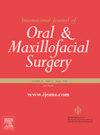头颈部癌症患者的食物质地调整:范围综述。
IF 2.2
3区 医学
Q2 DENTISTRY, ORAL SURGERY & MEDICINE
International journal of oral and maxillofacial surgery
Pub Date : 2024-11-20
DOI:10.1016/j.ijom.2024.11.004
引用次数: 0
摘要
本研究旨在概述为解决头颈部癌症患者吞咽困难而进行的食物质地调整,以及这些方法目前的应用情况。我们在五个数据库中制定了全面的搜索策略:PubMed、Embase、Web of Science Core Collection、CINAHL 和 Cochrane Library。采用 JBI 范围界定综述指南对文献进行描述性分析并提取数据。共纳入 13 项研究,其中 11 项研究评估了接受 HNC 治疗的患者的吞咽功能,两项研究直接调查了改良食物与 HNC 患者吞咽功能的关系。大多数研究使用稀薄液体进行评估,评估过程通常从稀薄或粘稠液体过渡到固体/半固体。无论采用哪种治疗方法,都会出现不良后果。不过,术后短期内吞咽困难似乎会加重。就干预措施而言,增稠剂可能会对患者的吞咽功能产生积极影响。在调查食物质地改变的研究中,治疗后不良吞咽结果的发生率有所增加。对于这类患者,可以考虑使用增稠剂进行进一步干预,在整个治疗过程中需要采取综合方法。本文章由计算机程序翻译,如有差异,请以英文原文为准。
Food texture modification in head and neck cancer patients: a scoping review
The aim of this study was to provide an overview of food texture modification to address dysphagia in patients with head and neck cancer, and the current application of these methods. A comprehensive search strategy was developed across five databases: PubMed, Embase, Web of Science Core Collection, CINAHL, and the Cochrane Library. The JBI guidance for scoping reviews was used to conduct a descriptive analysis of the literature and extract data. Thirteen studies were included; 11 evaluated swallowing function in patients undergoing treatment for HNC, while two directly investigated modified food in relation to swallowing function in patients treated for HNC. Most of the studies used thin liquids for assessment, and the evaluation process often transitioned from thin or thick liquids to solids/semi-solids. Adverse outcomes occurred regardless of the treatment. However, dysphagia seemed to get worse in the short term after surgery. In terms of interventions, thickeners might have a positive effect on the patient’s swallowing function. In the studies investigating food texture modification, there was an increased incidence of adverse swallowing outcomes after therapeutic treatment. Further intervention with thickener could be considered in this patient population, and a comprehensive approach needs to be taken throughout the treatment process.
求助全文
通过发布文献求助,成功后即可免费获取论文全文。
去求助
来源期刊
CiteScore
5.10
自引率
4.20%
发文量
318
审稿时长
78 days
期刊介绍:
The International Journal of Oral & Maxillofacial Surgery is one of the leading journals in oral and maxillofacial surgery in the world. The Journal publishes papers of the highest scientific merit and widest possible scope on work in oral and maxillofacial surgery and supporting specialties.
The Journal is divided into sections, ensuring every aspect of oral and maxillofacial surgery is covered fully through a range of invited review articles, leading clinical and research articles, technical notes, abstracts, case reports and others. The sections include:
• Congenital and craniofacial deformities
• Orthognathic Surgery/Aesthetic facial surgery
• Trauma
• TMJ disorders
• Head and neck oncology
• Reconstructive surgery
• Implantology/Dentoalveolar surgery
• Clinical Pathology
• Oral Medicine
• Research and emerging technologies.

 求助内容:
求助内容: 应助结果提醒方式:
应助结果提醒方式:


